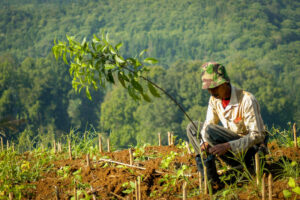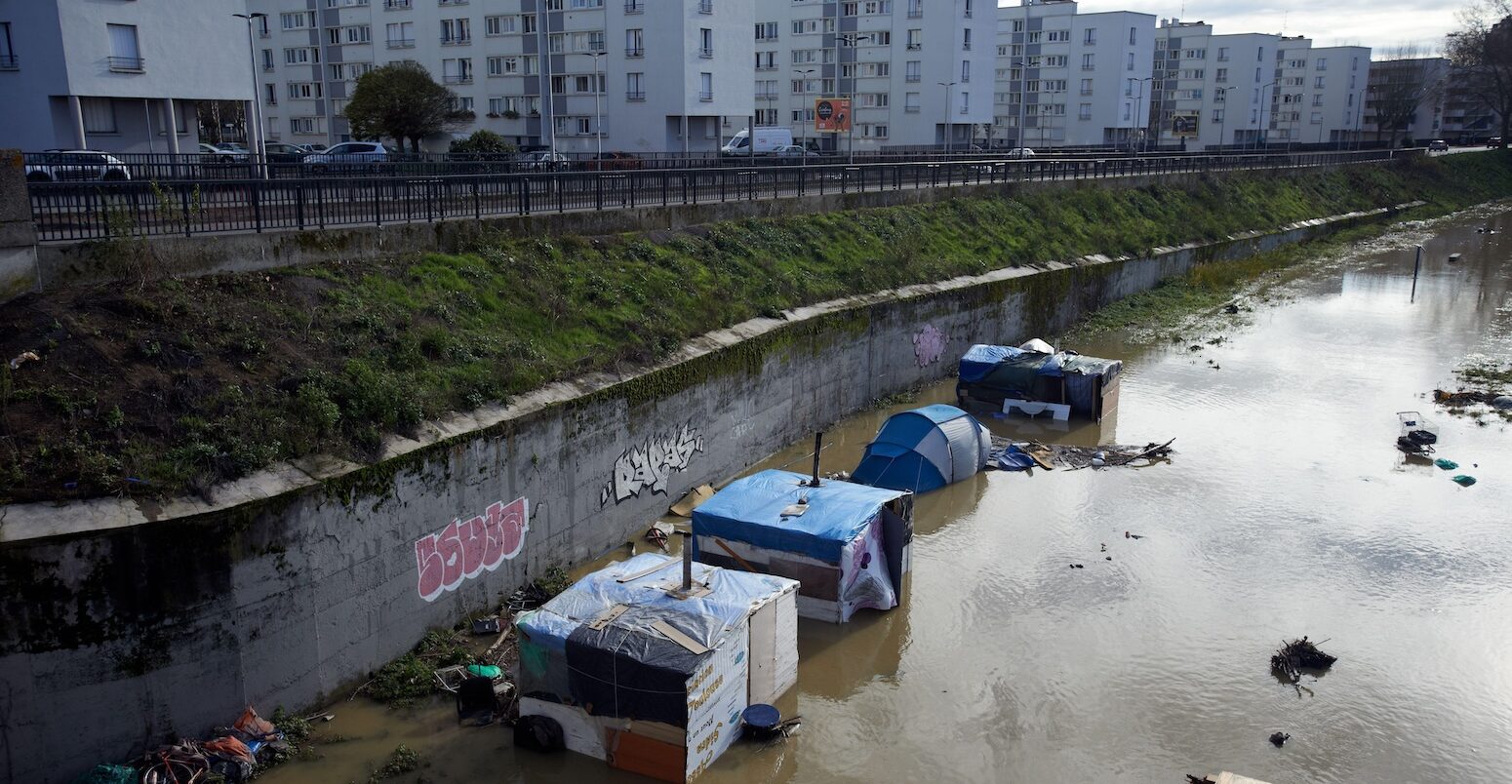
Guest post: How climate change could reverse progress in global inequality
Multiple Authors
04.10.24According to most metrics, economic inequalities across the world have been declining since the late 1980s.
This has been driven by decreasing inequalities between countries – due to rapid economic growth in Asia – and has occurred despite increasing inequalities within a number of countries.
However, this trend could be reversed by the impacts of climate change.
While the repercussions of a warming climate are being felt in all corners of the world, the scale of these impacts on different countries, regions, communities and individuals varies hugely. The degree of economic inequality in the future will largely depend on how well different groups can adapt.
In a new review study, published in Environmental Research Letters, we analysed the existing literature and gathered evidence on whether, where and how climate change exacerbates economic inequality.
We find robust evidence that climate change impacts do indeed increase economic inequality and disproportionately affect the poor – both globally and within countries on all continents.
Climate change increases inequalities locally and globally
Our review covers 127 peer-reviewed studies into climate change and inequality.
These research papers cover a wide range of geographies, climate impacts, types of economic inequality measured (such as income disparities, differences in consumption or welfare disparities), methods used (such as econometric models or surveys) and findings.
The vast majority of studies confirm that climate change is exacerbating economic inequalities or hitting the poorest the hardest. This finding holds true across regions, types of physical impacts, sectors, types of inequalities and assessment methods. It is particularly prominent in studies that compare the impact of climate change across countries.
There are only two studies that find that climate change reduces inequality, but they focus on specific local circumstances – that is, flooding in Pakistan or price disparities among fishers and traders in Mexico.
Similarly, four papers find that the wealthy – whether households or countries – are more affected by climate change than the poor. However, these instances are exceptions and mostly limited to specific circumstances. For example, one study shows that the tropical cyclone Bulbul in Bangladesh caused higher losses for richer shrimp farmers, because they had larger farms.
The chart below summarises these overarching results across the 127 studies, categorised by the percentage of studies showing a negative (red), positive (blue) or mixed (yellow) impact on inequality. Orange indicates a finding that does not fit one of the categories, while grey shows studies that could not reach a conclusion.
The different bars represent the geographical focus of the different studies. Most of the studies we reviewed either look at the global picture (46) or focus on individual countries (44).
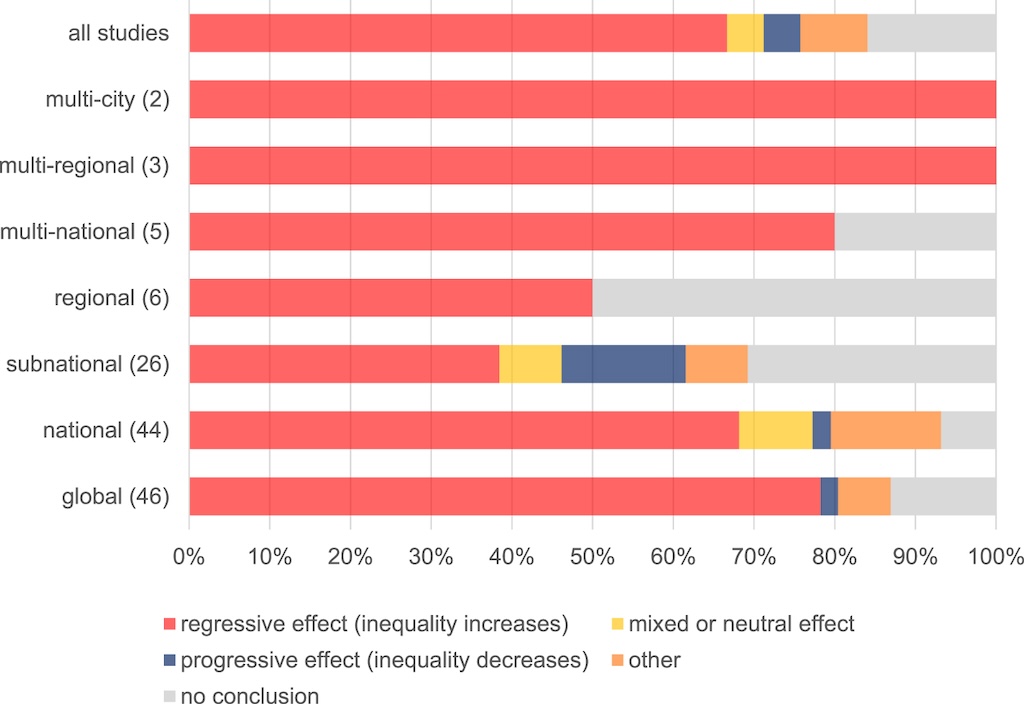
When it comes to global studies, the consensus is that climate change is widening inequalities or affecting the poor the most, with around 78% of the papers reaching this conclusion.
Some studies also highlight other groups being disproportionately impacted by climate change, such as rural communities, urban populations, women or specific regions and sectors.
However, there’s a minority of papers that remain inconclusive about both the impact of climate change on inequalities and which groups are most affected.
When it comes to national studies, the trend remains consistent: around 68% of these papers find that climate change is driving up economic inequality or hitting the poorest the hardest (30 out of 44 papers).
As the map below shows, this holds true in all parts of the world. The purple shading indicates the number of studies finding a negative climate impact on inequality for each country.
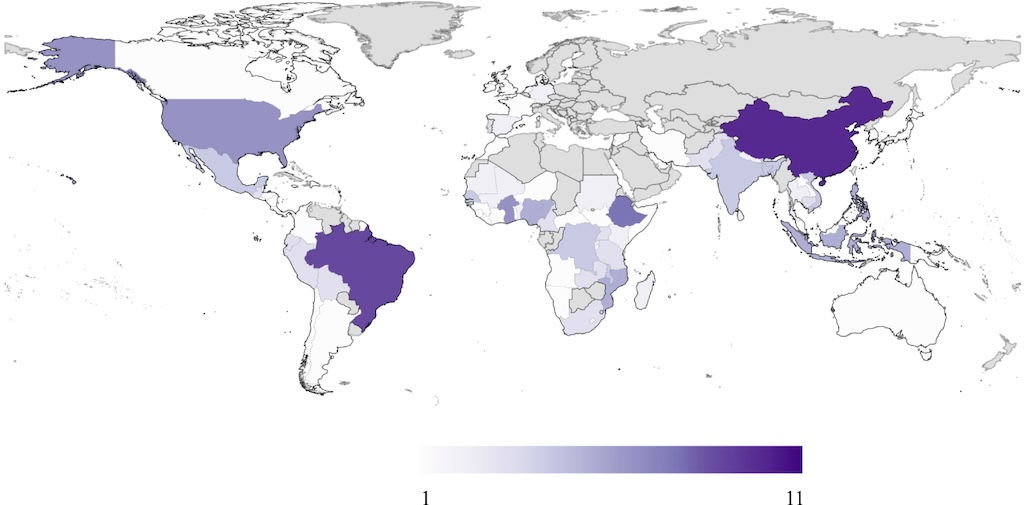
The countries with the highest number of studies (more than five) showing that climate change increases economic inequality or disproportionately affects the poor are China, Brazil, Ethiopia and the US.
Different climate impacts contribute to inequality
Looking at the breakdown of studies, we found that the percentage of papers pinpointing a particular climate impact as exacerbating inequality or affecting the poor more significantly ranges from 60% for changes in rainfall to 89% for sea level rise.
You can see this in the left-hand chart below, which shows the findings of the literature review separated by climate impact. The right-hand chart shows the findings separated by sector. The categories are the same as in the earlier chart.
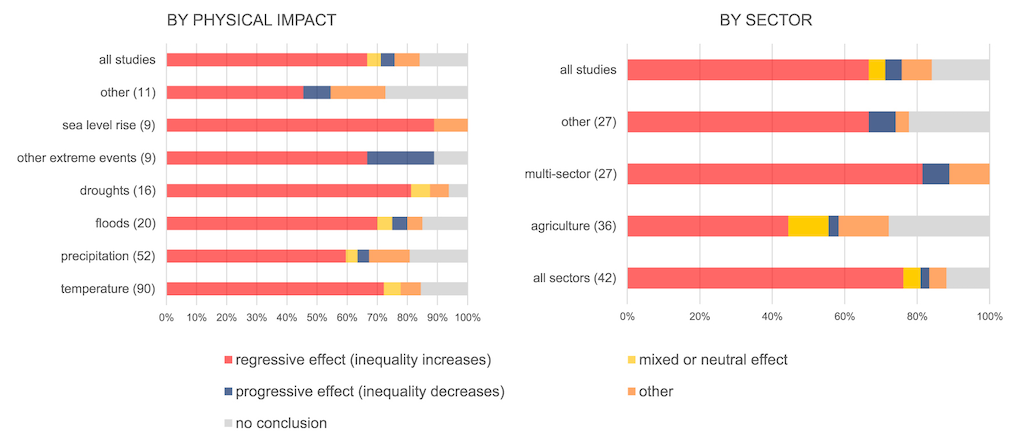
A majority of studies focus on the impact of rising temperature, with 72% of these concluding that temperature changes worsen economic inequality or affect the poor the most.
Most of the studies that find a reduction in inequality concern extreme weather events. This is often because these studies assess the impact on physical assets, which are predominantly owned by the wealthiest.
There are several channels through which biophysical climate change impacts translate into economic effects. These channels include broad economic effects that influence all sectors, changes in agricultural revenues due to factors such as crop yield declines, impacts on labour productivity, changes to infrastructure and physical assets, shifts in energy demand or water availability.
We found that studies identifying labour productivity or energy as the main channel through which climate change affects economic inequalities overwhelmingly conclude that inequalities increase or that the poor are more impacted.
A decline in labour productivity may indeed increase inequality if it disproportionately affects low-skilled workers, especially those who work outdoors or in non-air-conditioned environments.
Notably, a large proportion of the studies where physical assets are identified as the main channel suggest that inequality actually decreases due to climate change or that the wealthy suffer more. This is because rich individuals tend to face greater losses due to the higher value of their property.
Tackling climate impacts on inequality
Our investigation into the impacts of climate change on economic inequality was motivated by the need to better understand the climate change impacts are distributed across the world. This provides the other side of the coin to the effects of mitigation policies on inequality, which are often more widely discussed.
The evidence strongly indicates that the impacts of a warming climate are regressive across countries. Tackling the impacts of climate change on economic inequality will demand substantial policy changes and financial resources.
At the national level, policymakers will need to ensure that adaptation finance and loss and damage compensation effectively reach low-income households to reduce their vulnerability and increase their resilience to climate change impacts.
The results of our review underscore the importance of policymakers integrating climate risk management strategies into the design of “climate-proof” social programmes in poor regions, which are crucial for achieving climate justice objectives.
Of course, other forms of inequality beyond economic inequality, such as gender inequality, are important and interact with climate change, but this is a topic for another review.
Méjean, A. et al. (2024) Climate change impacts increase economic inequality: evidence from a systematic literature review, Environmental Research Letters, doi:10.1088/1748-9326/ad376e
-
Guest post: How climate change could reverse progress in global inequality




